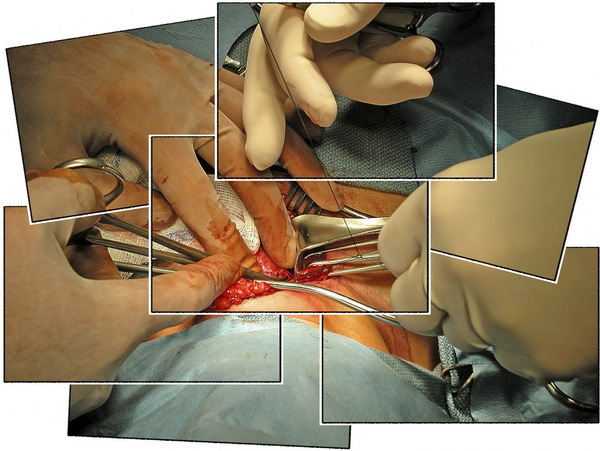Non-diabetes mellitus - symptoms, treatment
One of the basic conditions for the existence of all living organisms is maintaining the constancy of the internal environment. Homeostasis includes, among other things, a balance of water and mineral balance. Uncontrolled loss of fluid and electrolytes can lead to severe dehydration and rapid death.
Violations of water-mineral metabolism are often due to the pathology of the endocrine system. Expressed changes in most cases are associated with malfunctioning of the pituitary gland, hypothalamus and other endocrine glands. The most serious diseases of this type include diabetes insipidus. It is associated with the lack of vasopressin or its dysfunction at the tissue level.
Contents
- 1 Vasopressin: synthesis, regulation, action
- 2 What is diabetes insipidus?
- 2.1 Classification of
- 3 Epidemiology of diabetes insipidus
- 4 Symptoms of pathology
- 5 How is the diagnosis made?
- 6 Treatment of diabetes insipidus
Vasopressin: synthesis, regulation, action
Vasopressin is the biologically active secret of the hypothalamus( peptide nature).Its other names: antidiuretic hormone, arhipipressin.
Vasopressin is mainly formed in the neurons of the supraoptic nucleus of the hypothalamus. Accumulates and secretes into the blood this hormone cells in the posterior lobe of the pituitary gland. There, vasopressin enters through the axons of large cell neurons.
Antidiuretic hormone is released into the blood by the following stimuli:
- increase in plasma osmolality( osmolality);
- decrease in the volume of circulating blood.
Osmolarity is the total concentration of all dissolved particles. The more salts in the plasma, the higher this value. Normal work of the organism is possible only in a narrow range of plasma osmolarity from 280 to 300 mOsm / l. Increase in the concentration of salts is recorded by special osmoreceptors. These "biological sensors" are located in the hypothalamus, the wall of the third ventricle of the brain, in the liver.
The volume of circulating blood is another important parameter that allows to maintain the supply of tissues with oxygen and nutrients. If the fluid in the vessels becomes small, the system pressure decreases and microcirculation slows down. The decrease in blood volume is perceived by the receptors of the atria and the intrathoracic veins. These sensitive cells are called volumoreceptors.
Activation of osmoreceptors and volumoreceptors stimulates the release of antidiuretic hormone into the blood. Its biological role is reduced to correction of the arisen disturbances of water-mineral metabolism.
The level of vasopressin grows with:
- dehydration;
- blood loss;
- injury;
- severe pain;
- shock states;
- psychosis.
Also, the synthesis and secretion of antidiuretic hormone boosts certain medications.
Effects of vasopressin:
- enhances water re-uptake from primary urine;
- reduces diuresis;
- increases the volume of circulating blood;
- reduces plasma osmolality;
- reduces the content of sodium and chlorine ions in the plasma;
- increases the tone of smooth muscle fibers( especially in the digestive tract);
- increases the vascular tone;
- increases systemic blood pressure;
- has a hemostatic effect in case of capillary injury;
- increases the sensitivity of the vessels to catecholamines( adrenaline, norepinephrine);
- regulates aggressive behavioral reactions;
- is partly responsible for the formation of paternal love;
- partially determines social behavior( partner search, marital fidelity).
What is diabetes insipidus?
Non-diabetes mellitus is a disease that is characterized by a lack of vasopressin effects in the body.
Hormone dysfunction may be associated with a disruption of its synthesis or with a pathology of receptors for vasopressin on the periphery( primarily in the kidneys).
The only mechanism that supports the re-acquisition of water from primary urine in humans is the action of an antidiuretic hormone. If this factor ceases to work, then a severe violation of water-mineral metabolism develops.
Non-diabetes mellitus is characterized by:
- with a large volume of diuresis( urine is significantly more than 2 liters per day);
- low concentration of salts in urine;
- by dehydration;
- electrolyte disorders;
- by hypotension, etc.
Classification of
In terms of the level of the pathology, diabetes insipidus is divided into:
- central( a problem in the synthesis and release into the blood of a hormone);
- is a renal( the problem is the receptor's immunity to the hormone);
- other forms.
The central form of the disease can be associated with trauma, a brain tumor, ischemia in the pituitary or hypothalamus, infection. Quite often, diabetes insipidus develops after radical treatment of the pituitary adenoma( surgically or by radiation).Also such a diabetes is observed in the genetic syndrome of Wolfram( DIDMOAD-syndrome).A significant proportion of all patients with a central form do not find the etiological factor of the disease. In this case, diabetes insipidus is considered idiopathic.
Renal disease can be associated with congenital disorders of the structure of the receptors to the antidiuretic hormone. Also, this disease leads to kidney failure, ion disorders, the taking of certain drugs, hyperglycemia.
Non-diabetes mellitus in some cases develops during pregnancy. This form of the disease is transient. Immediately after birth, all the symptoms of pathology disappear. Gestagenny diabetes insipid explains the destruction of vasopressin by placenta enzymes.
Another transitory form of the disease is diabetes insipidus in children of the first year of life.
The severity of diabetes insipidus is determined by the degree of disturbances in homeostasis. The more pronounced dehydration, the more serious the disease.
Classification by severity:
- severe form( diuresis more than 14 liters per day);
- average severity( diuresis 8 to 14 liters per day);
- is an easy form( diuresis up to 8 liters per day).
If the fluid loss is less than 4 liters daily, then talk about partial( partial) diabetes insipidus.
Gestagenic and transient diabetes in children is usually easy. The iatrogenic form, due to the intake of drugs, often reaches an average severity level. The most severe cases of the disease in most cases are due to a central or renal form.
Epidemiology of diabetes insipidus
Pathology is considered rare. According to statistics, the prevalence of all forms of diabetes insipidus in different populations varies between 0.004-0.01%.Recently, there has been a steady increase in the number of cases. First of all, the incidence of the central form of diabetes insipidus is increasing. This phenomenon is explained by an increase in the number of craniocerebral injuries and surgical interventions on the brain.
Men suffer from diabetes insipidus as often as women. Most new cases of pathology are observed in young people. Usually, the disease debuts in patients aged 10 to 30 years.
Symptoms of pathology
Signs of diabetes insipidus are expressed in varying degrees in patients. The main complaints are associated with a strong thirst, dry skin, dry mouth and increased urine volume.
Symptoms of the disease:
- the liquid requirement is more than 6 liters per day;
- increase of urine volume to 6-20 liters per day;
- increased nighttime diuresis;
- sleep disorders;
- severe weakness and fatigue;
- decrease in saliva secretion;
- digestive disorders;
- heart failure;
- pressure reduction;
- rapid pulse;
- weight loss;
- dryness and itching of the skin;
- nausea and vomiting;
- skeletal muscle cramps;
- neurological symptoms;
- increased body temperature;
- urinary incontinence( in children after 4 years).
If a patient has such signs of a disease, then he needs to be examined in a clinic or in a hospital. Usually the diagnosis is carried out by an endocrinologist.
How is the diagnosis made?
Survey on diabetes insipidus includes laboratory diagnostics and special tests.
Before the doctors is the question of the causes of increased urine formation( polyuria) and dehydration in the patient. Differential diagnostics is conducted between central or renal diabetes insipidus and unnaturally strong thirst( polydipsia).
At the first stage in patients with polyuria and polydipsia confirm the presence of hypotonic diuresis( urine with low density).To do this, assess the volume of urine per day, its relative density and osmolality.
For diabetes insipidus are characterized by:
- urine volume of more than 40 ml per kg body weight per day;
- the relative density of urine is less than 1005 g / l;
- urine osmolality is less than 300 mOsm / kg.
Further, the main causes of nephrogenic diabetes insipidus( hyperglycaemia, hypercalcemia, hypokalemia, hyperkalemia, renal failure, urinary tract infection) are excluded.
Further the patient is tested:
- test with dryness;
- test with desmopressin.
In patients with true diabetes insipidus, lack of fluid intake leads to rapid dehydration and loss of body weight. In this case, the central form of the disease is easily corrected by desmopressin.
Complete the diagnosis of pathology by searching for the causes of symptomatic diabetes insipidus. At this stage, brain tumors( with MRI), genetic defects, etc. are detected.
Treatment of diabetes insipidus
The degree of efficacy of therapy is assessed by the patient's well-being and the volume of fluid loss.
There are 3 stages:
- compensation;
- subcompensation;
- decompensation.
Patients with disease compensation have no symptoms of diabetes insipidus. In the subcompensation stage, moderate polyuria and polydipsia are observed. In patients with decompensation, treatment is absolutely ineffective( the daily volume of urine remains in the previous pathological boundaries).
Therapy for diabetes insipidus depends on the type of pathology:
- central form is treated with tablets, drops or spray with synthetic hormone desmopressin;
- renal insipid diabetes is treated with thiazide diuretics and some non-steroidal anti-inflammatory drugs.
Desmopressin is a synthetic analogue of vasopressin. It was used to treat the central form of the disease since 1974.Desmopressin gives a pronounced and prolonged antidiuretic effect. Synthetic hormone practically does not affect the vascular tone and systemic blood pressure.
The initial dose of desmopressin 0.1 mg for half an hour before meals 3 times a day or 10 μg intranasally 2 times a day. Average daily doses - inside 0.1-1.6 mg or 10-40 mkg in the form of drops or spray. The need for a medicine is not related to the patient's sex. Usually, a lower dose is needed for patients with postoperative or post-traumatic diabetes insipidus. And the greatest needs are in patients with idiopathic form. High doses are needed for every tenth patient with central diabetes insipidus. It is desirable to prescribe intranasal drugs.
Overdose of medicines leads to complications:
- decrease in the concentration of sodium in the blood;
- pressure increase;
- development of edema;
- impaired consciousness.
All these symptoms are associated with water intoxication.
Renal diabetes insipidus is usually harder to treat. Most often, the volume of urine decreases not to the norm, but only by 40-50% of the initial values. Treatment is carried out with thiazide diuretics and non-steroid agents. These drugs affect directly the kidneys. Treatment does not eliminate the cause of the disease - the pathology of the receptors to vasopressin. In addition, prolonged use of medication can have an adverse effect on the health of the patient.
In the case of partial diabetes insipidus or with a mild form of disease, non-drug therapy may be used for treatment. Its basis is a sufficient drinking regime. Dehydration is prevented by consuming the required amount of water and salts.
Endocrinologist Tcvetkova IG
Recommended for viewing:



